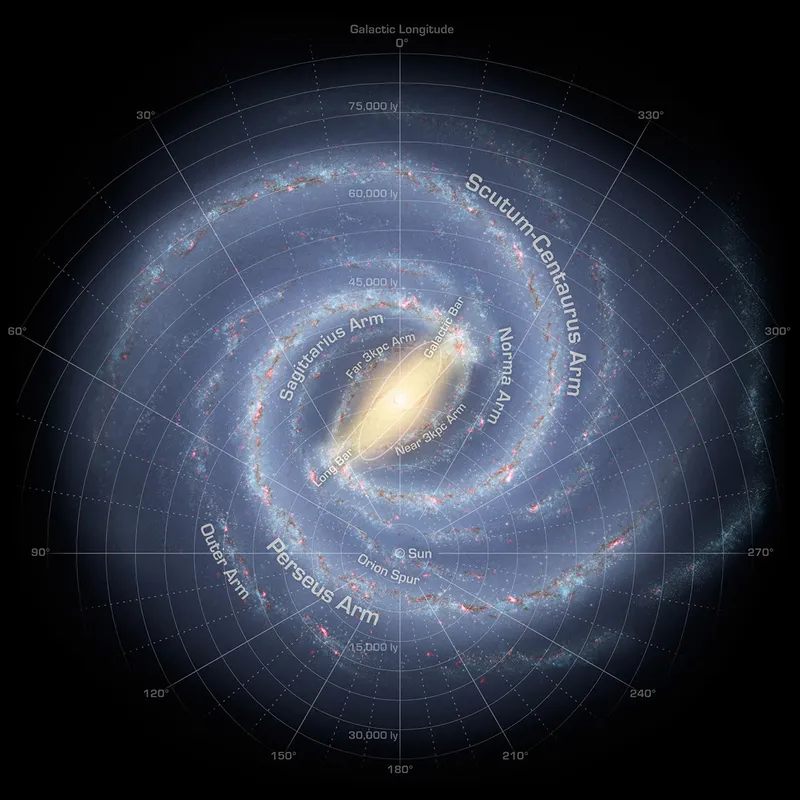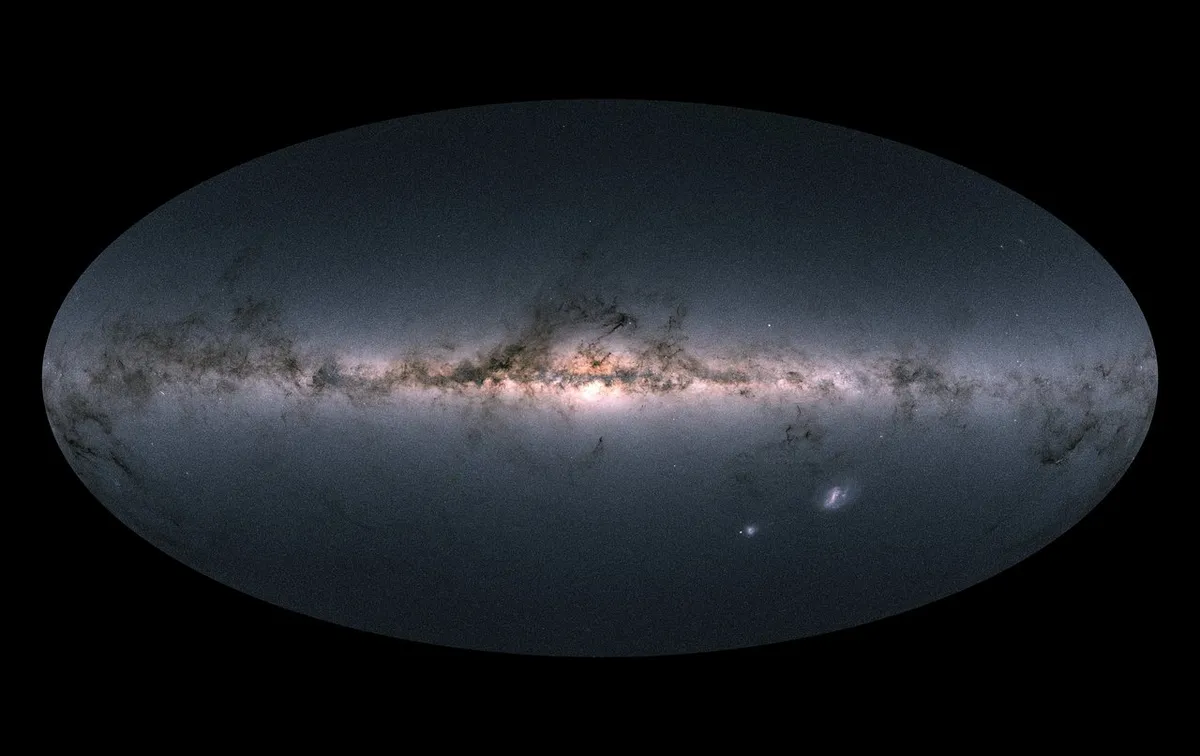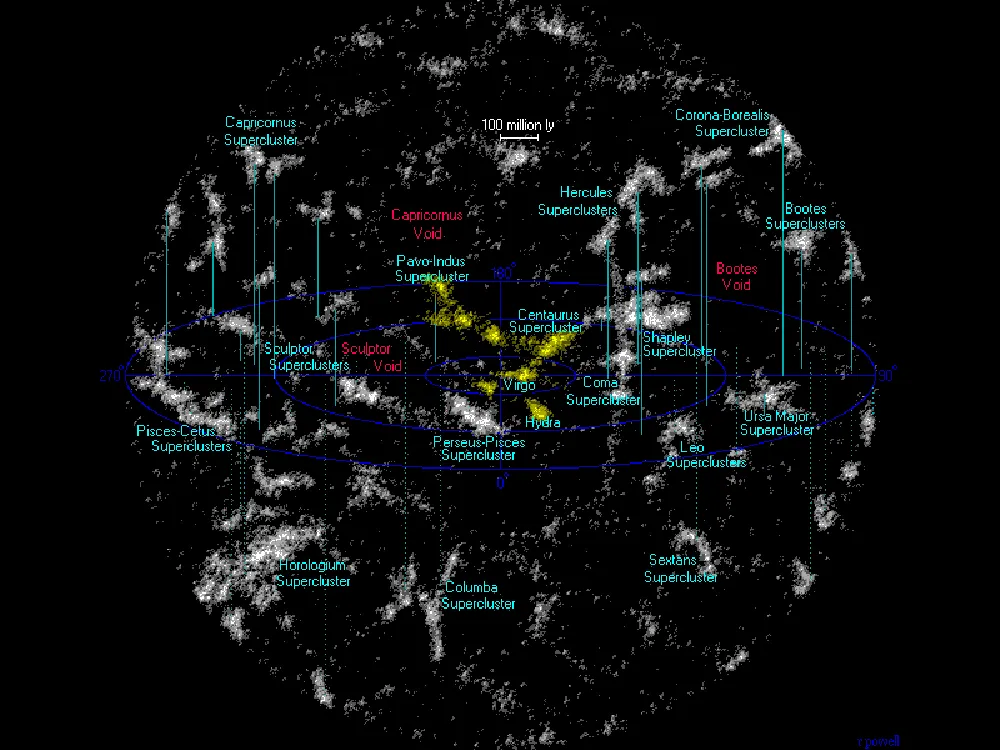Shut your eyes, count five seconds and open them again.
Congratulations: you’re now some 3,000km (1,864 miles) from where you were when closed them, thanks to the gravitational pull of the Great Attractor.
This is a region of intergalactic space, 150-250 million lightyears from Earth, that's slowly drawing the Milky Way and thousands of other galaxies closer towards it.
Or at least, it is for now – but more on that in a minute.

A cosmos in motion
The key thing to remember here is that in space, nothing is ever still. You probably feel like you’re sitting still as you read this, but you’re not.
Earth is spinning on its axis at a speed of around 1,600km (1,000 miles) per hour.
It’s also whizzing around the Sun at around 108,000 km/h (67,000 mph), and beyond that, there’s the Solar System’s own velocity to take into account, as it circles the centre of the Milky Way at a staggering 828,000 km/h (500,000 mph).
And that’s before we even consider the ongoing expansion of the Universe…

The cosmos is, in short, a bewildering melange of different forces whose combined effects mean that everything in it is constantly on the move, with some objects being drawn inexorably closer together while others creep ever further apart.
It’s all very confusing, but human beings are quite clever, so by the late 1970s, we had most of the above figured out – equations, formulas, esoteric constants and all.
Except that then, someone noticed a problem.

Discovering the Great Attractor
Astronomers studying the redshift of other galaxies (the extent to which their light has been “stretched” out to longer wavelengths on its journey to Earth, which is a useful indicator of their distance) noticed that, on top of all the movement you’d expect due to the phenomena outlined above, the Milky Way and other nearby galaxies seemed ALSO to be moving at around 600km/s towards a point in space lying beyond the plane of the Milky Way, in the direction of the constellations Triangulum Australe, the Southern Triangle and Norma, the Carpenter’s Square.
Unfortunately, lying beyond the Milky Way’s galactic plane put this region in the ‘Zone of Avoidance’: that part of space where we can’t see anything because it’s blocked by the light of the Milky Way.

So while the Great Attractor’s effects were first observed in 1978, it wasn’t until nearly a decade later, following advances in X-ray astronomy, that we were able to create more accurate ‘map’ of the Universe, and so work out what was going on.
And it’s back to lots of confusing motion again!
The Milky Way and the other galaxies in our local group are being pulled towards a much larger group called the Virgo cluster, which in turn is drifting towards an even larger group called the Virgo supercluster… which in turn is moving towards the centre of an even larger supercluster known as Laniakea.
And at the heart of Laniakea lies, you guessed it, the Great Attractor.

So what is the Great Attractor?
The Great Attractor, in other words, is not so much a THING – like a star, comet or galaxy – but a PLACE, the central gravitational point of the Laniakea supercluster. And that’s where we’re hurtling at a dizzying 600 km/s.
There’s a catch, though: we’ll never actually get there!
Because it’s so huge, the Laniakea isn’t gravitationally bound, in the way that galaxies and galaxy groups are.
So, thanks to the dark energy that is causing the expansion of the Universe to accelerate rather than slow down, all its components are gradually moving apart at a quickening rate.
At time of writing, the gravity coming from the Great Attractor is still enough to pull the Milky Way towards it… and that will be true for a few more more billion years yet.
But eventually, dark energy will have pushed the Great Attractor region so far away from us that it will no longer pack the same kind of gravitational clout, and instead of the Milky Way being drawn towards the Great Attractor, it will start to move away from us.

